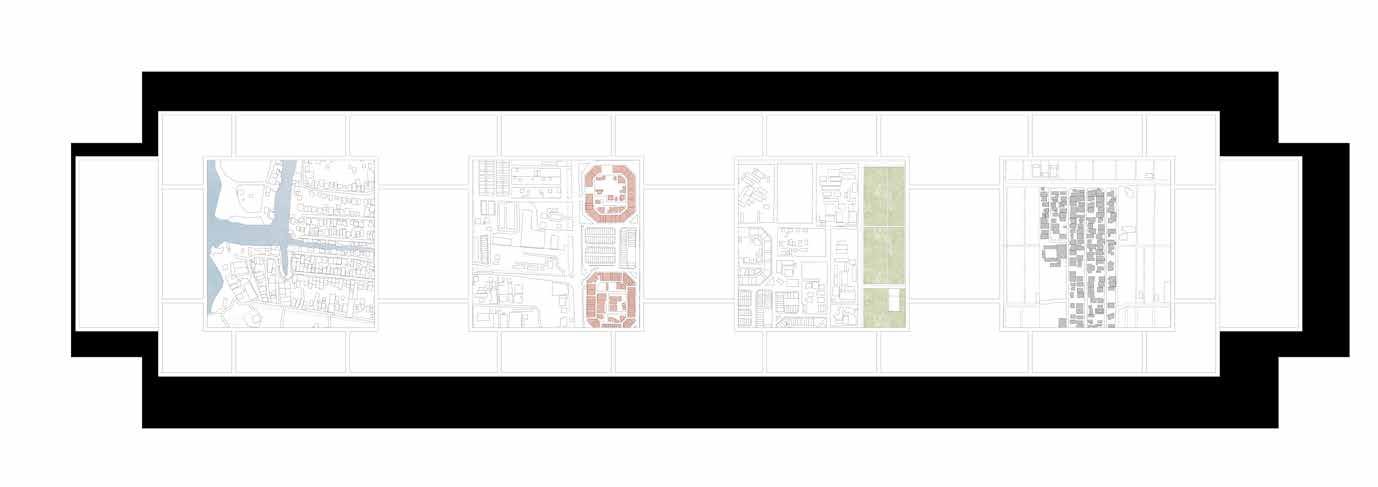A Collective Framework of Fortifications for the Agricultural Landscape of Sekinchan Village
an Architectural Thesis by Eunice Lim Min Yee
Published2024
Master of Architecture

A Collective Framework of Fortifications for the Agricultural Landscape of Sekinchan Village
an Architectural Thesis by Eunice Lim Min Yee
Published2024
Master of Architecture
The thesis is a sequel to a series of urban studies entitled ‘The Fortified Metropolis’, which embarks on an inquiry into reimagining fortification as an urban and architectural paradigm. Traditionally, fortifications are synonymous with strength, defense, and grandiosity, often employed to protect urban realms from external threats. However, the thesis turns the concept on its head by examining a rural, agricultural community, focusing on the latent forces of contemporary ‘enemies’ that threaten to erode the cultural and ecological essence of the landscape.
Framing the notion of fortification not as one of brute strength, but as a form of ‘soft power’, the project explores how architecture can serve as an educational and pedagogical tool. The proposed Agri-Kampus—a new educational complex—seeks to reconnect the community with its agricultural roots, thereby safeguarding the village’s socio-economic fabric from capitalistic development, brain drain, overtourism, and other destabilizing forces.
The thesis positions fortification as an architectural framework beyond the defensive walls of medieval times, instead evolving into a strategic network of spaces and resources aimed at revitalizing the village’s agricultural economy and social bonds, as a cradle of knowledge and community.
PROJECT Architecture
SITE
Sekinchan Village
SEMESTER
Aug 2024




























































































Focus:

Agricultural































































































































































































































































































































































PROJECT
Urban Studies
SITE
Sekinchan Village
SEMESTER
Jan 2024
This thesis explores the relevance of architectural fortifications in modern urban contexts, reimagining them as tools for resilience against contemporary threats such as urban sprawl, brain drain, trade instability, and environmental challenges. Drawing inspiration from precedents like DOGMA’s Stop City, Andrea Branzi’s Agronica, and Liu Jiakun’s West Village, the thesis asserts that the principles of fortification—organizing space, regulating resources, aligning values, and connecting clusters—remain vital for sustaining modern cities.
Sekinchan Village in Kuala Selangor is selected as the site, a rural community yet untouched by urbanization’s adverse effects, making it a prototype for fortifying villages. Through detailed analysis, the thesis dissects the village and its urban components, documenting their features and redefining their purpose to safeguard Sekinchan’s fisheries, paddy fields, cultural institutions, energy resources, and tourism. These studies culminate in a master plan of interconnected architectural and infrastructural interventions, collectively termed The Fortified Metropolis.
This renewed framework addresses the threat of “The Shrinking Settlement”— the erosion of rural communities due to urban expansion. By integrating six mini-projects across Sekinchan’s landscape, the design proposes fortification-centric solutions that preserve the village’s economic, cultural, and environmental integrity. Among these, the Agri-Kampus emerges as the key architectural project, demonstrating how fortification principles can be adapted to modern needs, promoting education, agriculture, and community resilience.
by Eunice Lim Min Yee
A New Framework for the Evolution of Sekinchan Village
<<<< Flip here
Master of Architecture Published2024